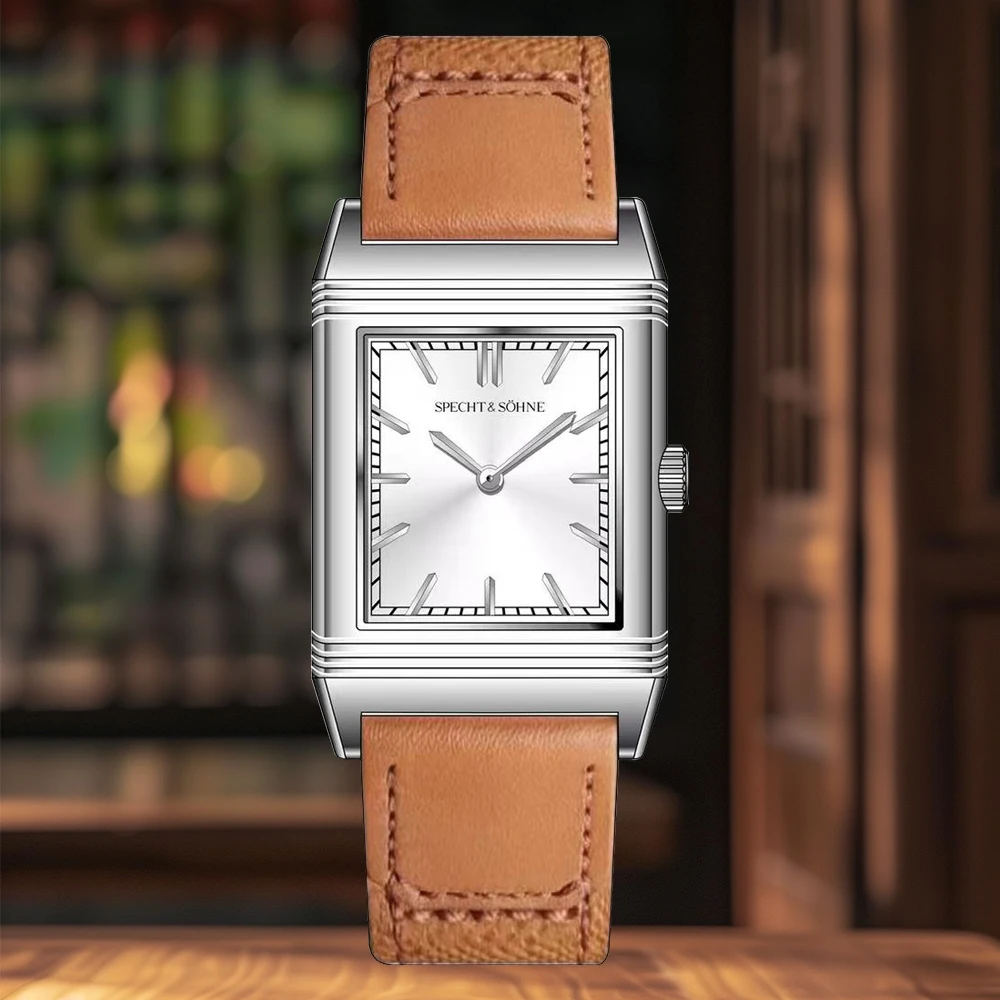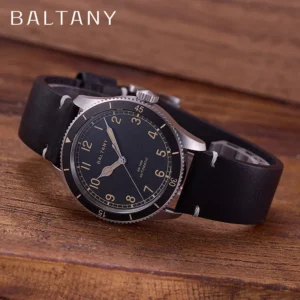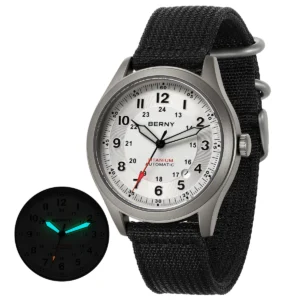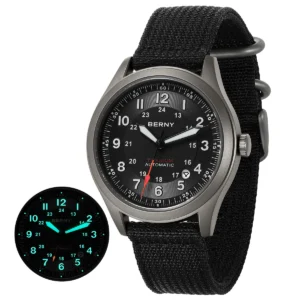The Dawn of Aviation Timepieces: When Pocket Watches Failed the Sky
In the early days of aviation, pilots faced a critical challenge that few today might consider: how to tell time while controlling an aircraft. Accurate timekeeping wasn’t merely a convenience but a matter of survival. Early aviators relied on precise timing for navigation, calculating speed, monitoring fuel consumption, and ensuring they reached checkpoints as planned. Yet the standard timepiece of the era—the pocket watch—proved woefully inadequate for the demands of flight.
Imagine trying to fly a rudimentary aircraft, both hands gripping controls that shook violently, while simultaneously needing to reach into a vest pocket, retrieve a watch, flip it open, and read the time. This impossible scenario highlighted the fundamental incompatibility between traditional timekeeping tools and the revolutionary new field of aviation. Pocket watches, which had served ground-based travelers adequately for centuries, suddenly became dangerous liabilities in the cockpit.
The early aviation environment demanded a completely new approach to timekeeping. Pilots required instruments they could consult instantly without releasing crucial controls. This fundamental need would spark one of the most significant evolutions in horology—the transformation of the wristwatch from a feminine accessory to an essential tool that would eventually become the standard timepiece for all genders. The aviation heritage behind pilot watch features reflects this remarkable journey of necessity-driven innovation.
The challenges of flight created urgent demands for specialized timing equipment, establishing a pattern of innovation that would define the relationship between pilot watches and aviation history for decades to come. What began as a practical solution to a specific problem would eventually reshape wristwatch design for everyone, not just those who took to the skies.
The First Purpose-Built Pilot’s Watch: Santos-Dumont’s Request
The story of the modern pilot’s watch begins with a friendship between two visionaries. In the early 1900s, Brazilian aviation pioneer Alberto Santos-Dumont complained to his friend Louis Cartier about a specific problem he encountered during flights. Checking his pocket watch while maintaining control of his aircraft was not just inconvenient—it was dangerous. What Santos-Dumont needed was a timepiece he could consult without removing his hands from the controls.
Responding to this challenge, Cartier created what many historians consider the first purpose-designed men’s wristwatch in 1904: the Santos. This groundbreaking timepiece featured a square case with exposed screws, a highly legible white dial with bold black numerals, and a leather strap that secured it firmly to the wrist. This collaboration represents perhaps the first direct influence of aviation needs on watch design, creating a template that would influence timepieces for generations to come. The birth of aviation timepieces marked a pivotal moment when watchmaking began to evolve specifically to meet the demands of flight.
What made the Santos watch revolutionary wasn’t just its wrist-mounted design, but how its entire configuration prioritized at-a-glance readability and operational convenience—qualities that would come to define pilot watches as a distinct category. The square case maximized dial space, while the contrasting black numerals on white background ensured visibility even in varying light conditions of early aviation. This collaboration between a pioneering aviator and an innovative watchmaker established the fundamental principle that would guide all future pilot watch design: form must follow function, with every element serving the practical needs of flight. These innovations laid the foundation for the rich history of aviation timekeeping tools that would follow.
World War I: Wristwatches Take to the Skies En Masse
The outbreak of World War I in 1914 revolutionized the role of wristwatches in military aviation. What began as a convenience quickly became standard equipment as aerial combat introduced unprecedented timing challenges. Military planners quickly recognized that synchronized operations and precise navigation required reliable timekeeping tools that could be consulted instantly while operating aircraft controls.
As air forces grew from experimental units into crucial military branches, the first official military specifications for pilot watches emerged. These standards codified features like luminous dials for night operations, robust cases to withstand combat conditions, and highly legible markers—elements that would become defining characteristics of the pilot watch genre. The conditions of wartime flying—open cockpits, high altitudes, extreme temperatures—served as the ultimate testing ground for watch design, accelerating innovations that might otherwise have taken decades to develop.
The transformation paralleled similar developments across military equipment, where the military necessity forged modern field watch designs through practical combat requirements. By war’s end, the wristwatch had firmly established itself as essential equipment for aviators, setting the stage for continued refinement of these purpose-built timepieces throughout subsequent decades. What began as adaptations to specific battlefield needs would evolve into standardized features that define pilot watches to this day.
Legibility Above All: The Pilot’s Primary Need
Nothing defines a true pilot’s watch more fundamentally than exceptional legibility. From the earliest days of aviation to modern times, the ability to read the time instantly, accurately, and under any conditions has remained the non-negotiable requirement for timepieces meant for the cockpit. This need drove designers to create some of horology’s most distinctive visual elements.
The pilot watch dial typically employs stark black-and-white contrast to maximize readability at a glance. Large Arabic numerals—often in a distinctive sans-serif font—stand out boldly against simple backgrounds, while hands are typically shaped for instant differentiation between hours and minutes. Many designs feature an oversized triangle or arrow at the 12 o’clock position, allowing pilots to immediately orient themselves to the dial’s position even in turbulent conditions or awkward viewing angles.
Night flying created additional challenges that drove innovation in luminous materials. Early pilot watches used radium paint for its powerful glow—despite radiation hazards unknown at the time—before transitioning to safer compounds like tritium and eventually modern Super-LumiNova. These luminescent elements weren’t merely aesthetic choices but critical safety features for night operations when cockpit lighting might be minimized to preserve night vision or during emergencies.
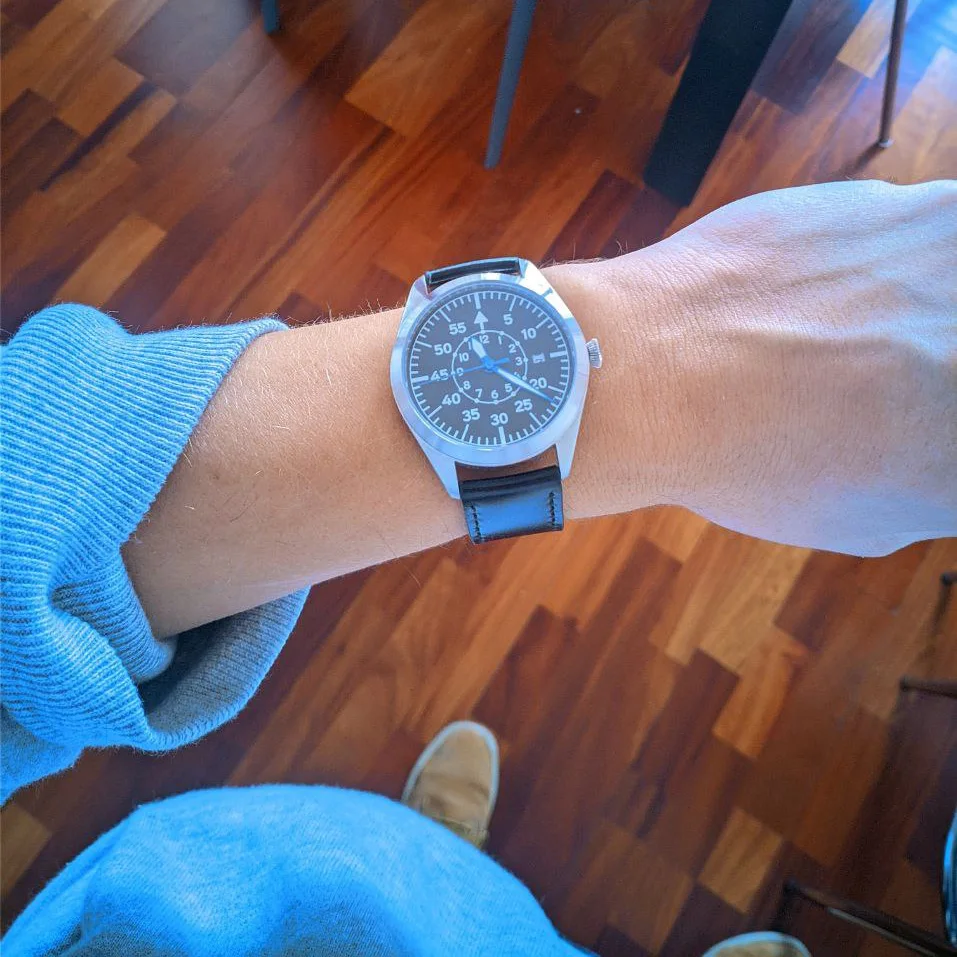
The evolution of pilot watch legibility features is perfectly exemplified in designs like the B-Uhr (navigator’s watch) developed for the German Luftwaffe. These watches featured enormous 55mm cases solely to maximize dial space and readability, with minimalist layouts stripped of any decorative elements that might compromise instant time recognition. Today’s classic pilot watches continue this tradition of prioritizing readability above all else, maintaining design principles established nearly a century ago because they remain the most effective solution to the fundamental need for instant, accurate time reading in the cockpit.
Designed for Gloved Hands: Oversized Crowns and Functionality
Early aviation presented harsh physical conditions that directly influenced watch design in practical ways. Pilots flew in open cockpits exposed to bitter cold at altitude, necessitating heavy gloves that made manipulating small watch components nearly impossible. This operational reality led to one of the most distinctive features of pilot watches: the oversized crown.
The development of large, grippable crowns—often in distinctive “onion,” “diamond,” or “conical” shapes—was a direct response to the need for pilots to wind and adjust their watches without removing their protective gloves. These pronounced crowns weren’t merely stylistic choices but essential functional elements that could mean the difference between successful time-setting and dangerous fumbling during critical flight operations. This design consideration extended beyond just the crown to influence overall case proportions, with many pilot watches featuring substantial dimensions and pronounced features that could be operated even with limited dexterity. Today’s automatic pilot watches continue this tradition of accessible functionality, even as the practical necessity has diminished with enclosed, climate-controlled cockpits.
Unwavering Accuracy: The Navigation Imperative
For early pilots, a watch wasn’t merely an accessory—it was a crucial navigation instrument upon which lives depended. Before sophisticated electronic navigation systems, pilots relied on “dead reckoning” navigation techniques that required extraordinarily precise timekeeping. A few seconds of error could result in being miles off course, potentially with catastrophic consequences, especially during long-distance flights over featureless terrain or open water.
This critical need drove watchmakers to equip pilot timepieces with the highest-quality movements available, often chronometer-certified for superior accuracy. Unlike civilian timepieces where minor timing variations might go unnoticed, pilot watches needed to maintain exceptional precision despite the harsh conditions of flight. This included extreme temperature fluctuations that could affect movement performance, as cockpits might swing from scorching heat on the ground to freezing cold at altitude in a matter of minutes.
Aircraft instrumentation presented another challenge unique to aviation: magnetic fields that could disrupt watch accuracy. The growing electrification of aircraft cockpits created magnetic interference that could render ordinary watches unreliable. In response, manufacturers developed special anti-magnetic features including soft iron inner cases that acted as Faraday cages, shielding the movement from harmful magnetic influences. These technical innovations, though invisible to the eye, represent some of the most significant contributions of aviation to watch development.
The physical stresses of flight—vibration from engines, sudden air turbulence, and the occasional hard landing—further required exceptional shock resistance. Special shock absorption systems were incorporated to protect delicate balance wheels and escapements from impacts that might affect timekeeping. The aviation heritage behind pilot watch features shows how these technical challenges drove watchmakers to develop solutions that would eventually benefit timepieces across all categories.
Battle-Ready Resilience: Surviving the Cockpit Environment
The aviation environment presented challenges far beyond those encountered by terrestrial timepieces. Early aircraft cockpits subjected watches to rapid pressure changes, extreme temperature variations, intense vibration, and exposure to fuels and lubricants. Military aviation added the potential for combat damage. These harsh conditions demanded unprecedented durability from timepieces that were expected to remain functional through it all.
Watch manufacturers responded by developing reinforced case construction with specialized gaskets and seals to protect against moisture and contaminants. Crystal materials evolved from standard glass to more shatter-resistant acrylics and eventually to virtually scratch-proof sapphire. These innovations weren’t merely enhancements but essential features for aviation reliability, where a failed watch could compromise mission success or even survival.
The need for extreme durability eventually led to experimentation with advanced materials beyond traditional stainless steel. Modern titanium automatic watches represent the culmination of this search for the perfect balance between strength and weight—offering superior corrosion resistance while reducing mass, a particular concern for pilots already burdened with equipment. What began as specialized military requirements eventually filtered into civilian pilot watches, establishing durability standards that continue to influence watch design across categories.
The Chronograph: Timing Critical Flight Segments
For pilots, precise timing of specific intervals—not just knowing the current time—became essential for safe and effective flight operations. Fuel consumption calculations required accurate timing of engine operation at different power settings. Navigation depended on measuring exact intervals between checkpoints. Mission coordination demanded synchronization across multiple aircraft. These critical needs drove the integration of chronograph functions into pilot watches.
The chronograph—essentially a sophisticated stopwatch mechanism integrated into a wristwatch—allowed pilots to time specific events without interfering with the display of current time. Push buttons positioned on the case enabled start, stop, and reset functions that could be operated even while wearing gloves. In military applications, specialized features like flyback functions allowed for instant chronograph reset and restart with a single button press—crucial for rapidly timing consecutive legs of a mission without losing precious seconds.
The chronograph complication became so closely associated with aviation that many chronograph pilot watches are instantly recognizable as descendants of these functional tools. Models like the Hanhart 417 ES or Tutima Fliegerchronograph established design languages that continue to influence modern timepieces. While today’s cockpits contain sophisticated digital timing systems, the analog chronograph remains valued for its reliability, independence from electrical systems, and intuitive operation during high-stress situations.
The Slide Rule Bezel: An Analog Flight Computer
Perhaps no horological innovation demonstrates the ingenious response to aviation challenges better than the slide rule bezel—essentially a circular analog computer strapped to a pilot’s wrist. Developed most notably by Breitling in the early 1950s for its legendary Navitimer model, this remarkable feature transformed the pilot’s watch from simple timekeeper to comprehensive calculation tool.
Before electronic calculators and flight computers, pilots needed to perform complex mathematical operations during flight: fuel consumption rates, time-distance calculations, unit conversions, and more. The slide rule bezel provided an elegant solution by incorporating logarithmic scales around the perimeter of the watch that could be rotated in relation to fixed scales on the dial. By aligning specific markers, pilots could perform multiplication, division, and various conversions simply by reading corresponding positions on the scales.
The genius of this design lay in its accessibility during flight. Rather than fumbling with paper and pencil or separate calculation tools while flying, pilots could perform essential calculations with a simple twist of the watch bezel. This functionality represents perhaps the purest example of how specific aviation needs drove watch design innovation beyond traditional timekeeping. The essential pilot chronograph features pioneered during this era established a distinctive aesthetic that remains instantly recognizable even in contemporary timepieces.
Tracking Time Across the Globe: GMT and Multi-Time Zone Functions
As aviation evolved from short regional flights to intercontinental travel, pilots faced an entirely new challenge: simultaneously tracking time in multiple zones. Long-distance flights crossing numerous time boundaries required constant awareness of both local time at the current position and standard reference time (typically Greenwich Mean Time or GMT) for coordination and navigation purposes.
This need drove the development of dual-time and GMT complications specifically designed for aviation use. The most elegant solution came in the form of an additional hour hand that completed one rotation every 24 hours, combined with a rotating bezel marked with 24-hour increments. This configuration allowed pilots to track their home or reference time zone while the standard hands displayed local time at their current location.
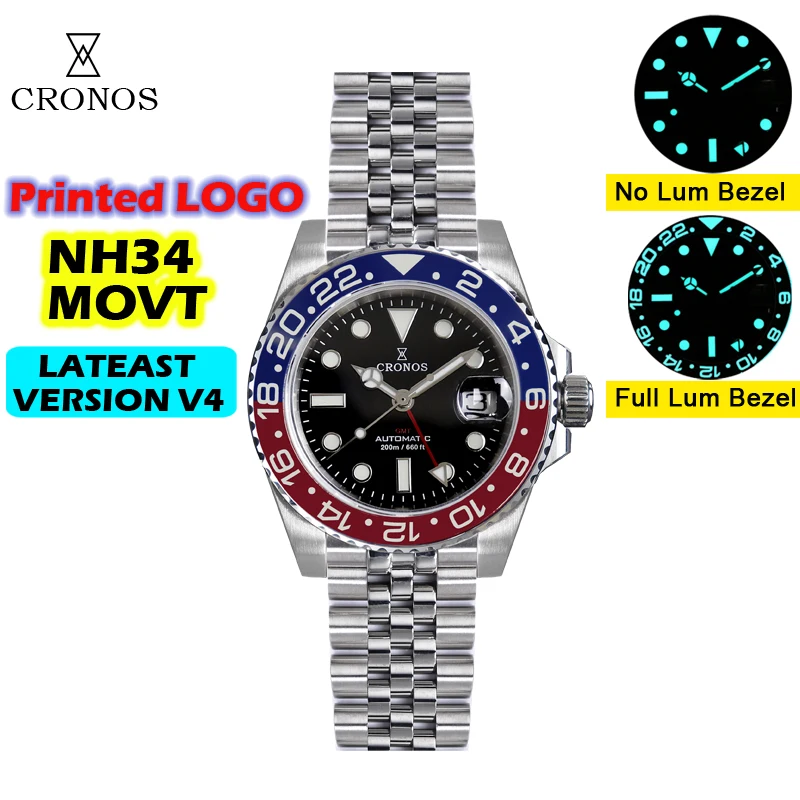
The practical utility of these GMT pilot watches extended beyond cockpit duties to the broader operational needs of international aviation. Flight crews needed to coordinate schedules across multiple time zones, calculate crew rest periods, plan flight operations, and maintain communication with distant control centers—all activities requiring simultaneous awareness of different time zones. The complete guide to multi-timezone watches shows how these innovations eventually found wide appeal beyond aviation as global business and travel expanded in the jet age.
Modern Evolutions: The Pilot Watch in the Jet Age
The advent of jet-powered flight and glass cockpits dramatically changed the aviation environment, yet remarkably, pilot watches adapted rather than disappeared. Modern cockpits feature redundant digital timing systems, GPS navigation, and comprehensive flight management computers—theoretically eliminating the need for wristwatch-based calculations or timing. However, pilot watches evolved to remain relevant both as backup instruments and as expressions of aviation heritage.
Material innovation has driven significant evolution in contemporary pilot watches. Lightweight titanium cases offer superior strength-to-weight ratios and corrosion resistance compared to traditional steels. Ceramic bezels provide virtually scratch-proof durability for frequently used components. Advanced luminous compounds deliver unprecedented brightness and duration without radioactive materials, enhancing nighttime legibility and safety.
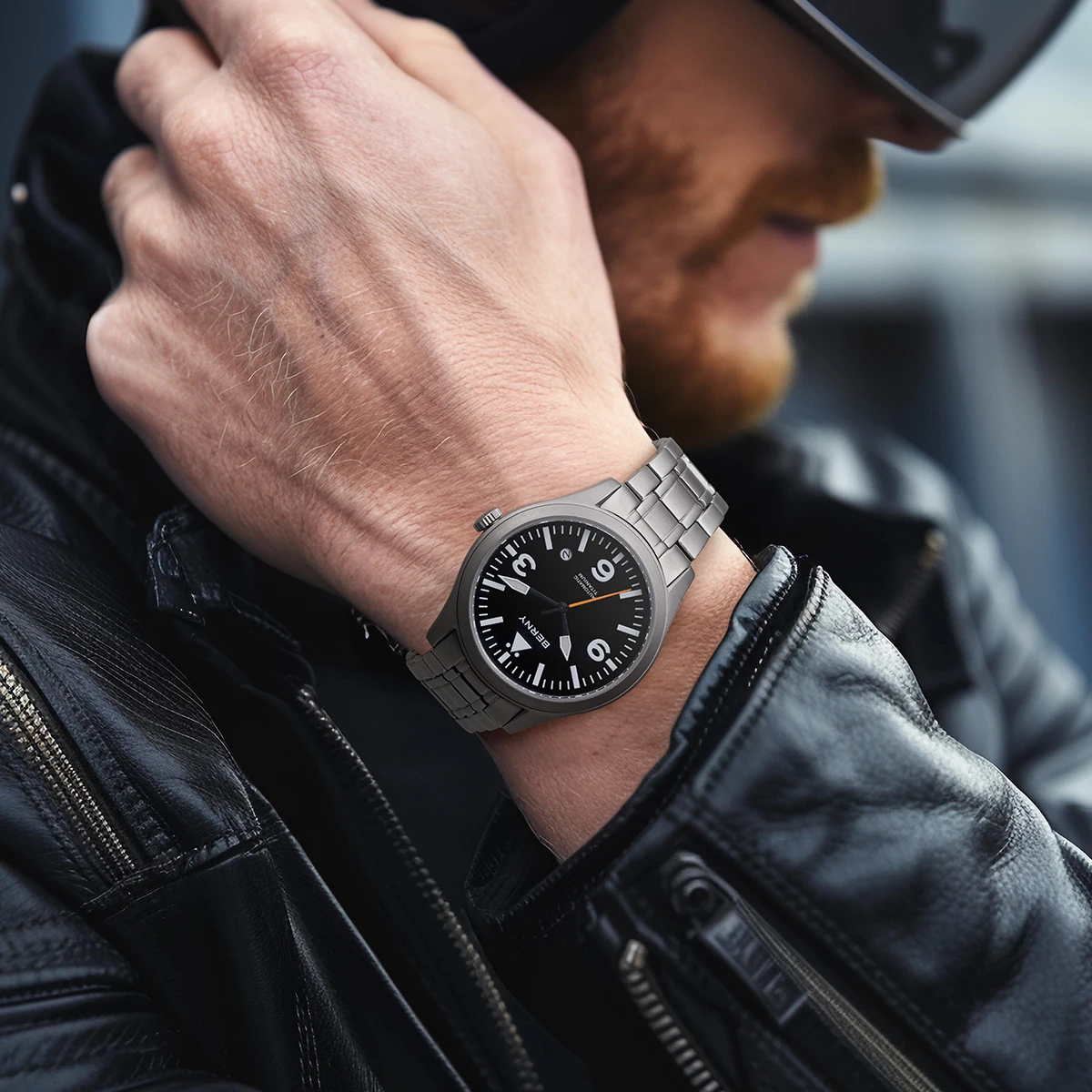
Modern pilot watches often incorporate sophisticated technology while maintaining classical analog displays—combining tradition with innovation. Anti-reflective sapphire crystals improve readability under various lighting conditions. Enhanced water resistance protects against unexpected pressure changes. Highly specialized movements offer increased accuracy, power reserve, and resistance to magnetic fields far beyond what was possible in early aviation timepieces. These advancements reflect how pilot watch design continues to evolve while remaining true to its core purpose of reliable timekeeping in demanding conditions.
Automatic Chronograph Watches, Chronograph Pilot Watches
Price range: $233.36 through $237.58 Select options This product has multiple variants. The options may be chosen on the product pageClassic Automatic Dress Watches, GMT Automatic Watches, GMT Pilot Watches
Price range: $1,240.86 through $1,463.33 Select options This product has multiple variants. The options may be chosen on the product pageProfessional Spec Dive Watches, Titanium Automatic Watches
$574.74 Select options This product has multiple variants. The options may be chosen on the product pageClassic Pilot Watches, Military Inspired Automatic Watches
$561.00 Select options This product has multiple variants. The options may be chosen on the product pageClassic Field Watches, Classic Pilot Watches, Rugged Automatic Watches, Titanium Automatic Watches
Price range: $425.24 through $496.28 Select options This product has multiple variants. The options may be chosen on the product pageClassic Field Watches, Classic Pilot Watches, Military Inspired Automatic Watches, Titanium Automatic Watches
Price range: $425.24 through $496.28 Select options This product has multiple variants. The options may be chosen on the product page
From Tool to Icon: The Enduring Legacy of Pilot Watch Design
What began as purely utilitarian instruments have transcended their original purpose to become enduring icons of horological design. The pilot watch aesthetic—born from functional necessity—has established a distinctive design language that resonates far beyond aviation circles. The stark legibility, robust construction, and purposeful appearance communicate a sense of precision and reliability that appeals across diverse audiences.
The journey from cockpit tool to cultural icon reflects how exceptional functional design often creates its own aesthetic appeal. The oversized crowns originally meant for gloved operation now symbolize rugged capability. The high-contrast dials designed for readability in challenging conditions now represent clarity of purpose. The substantial cases developed for durability now convey strength and resilience. These qualities resonate with watch enthusiasts who may never enter a cockpit but appreciate the authentic heritage and purpose-driven design.
Vintage pilot watches have become highly sought-after collectors’ items, with original military examples commanding premium prices at auctions and specialized dealers. Simultaneously, contemporary watchmakers continue to draw inspiration from this rich heritage while incorporating modern materials and techniques. This ongoing dialogue between historical authenticity and contemporary innovation ensures that the evolution of pilot watches from cockpit to icons remains a dynamic story rather than a concluded chapter.
The pilot watch represents a rare example of design evolution driven almost entirely by functional demands rather than fashion or marketing considerations. Each distinctive feature can be traced to specific operational needs—creating an honest design language that continues to influence watchmaking far beyond aviation-specific timepieces.
Time-Tested Excellence: Why Pilot Watch Design Still Matters Today
The enduring relevance of pilot watch design principles demonstrates a fundamental truth about exceptional tools: when form truly follows function, the resulting design often achieves a timelessness that transcends its original purpose. The challenges of early aviation forced watchmakers to strip away decorative excess and focus solely on what mattered—legibility, reliability, functionality, and durability. These remain the defining qualities of exceptional timepieces regardless of category.
Today, we can appreciate pilot watches on multiple levels simultaneously. They connect us to a remarkable period when brave aviators pushed the boundaries of human achievement with minimal technology. They demonstrate how specific challenges drive innovative solutions that often find wider application. They showcase the beauty that emerges from purely functional design when executed with precision and purpose. For watch enthusiasts, pilot timepieces offer a tangible connection to this rich heritage of problem-solving and adventure.
The principles established through decades of aviation-focused design—exceptional legibility under all conditions, intuitive operation, robust construction, and unfailing accuracy—represent universal values in fine watchmaking. These qualities align perfectly with the philosophy that exceptional timepieces should serve their wearers flawlessly while expressing craftsmanship through purposeful design rather than mere decoration. When we appreciate a well-designed pilot watch today, we’re acknowledging generations of refinement driven by the most demanding conditions—a heritage that continues to elevate the standards for all fine timepieces.

